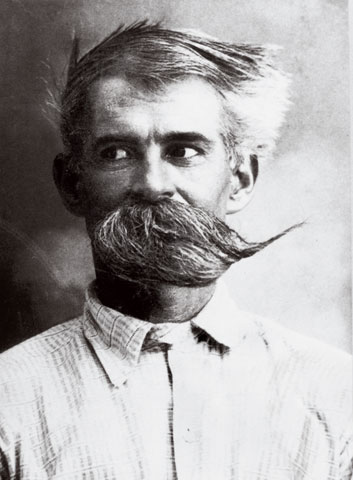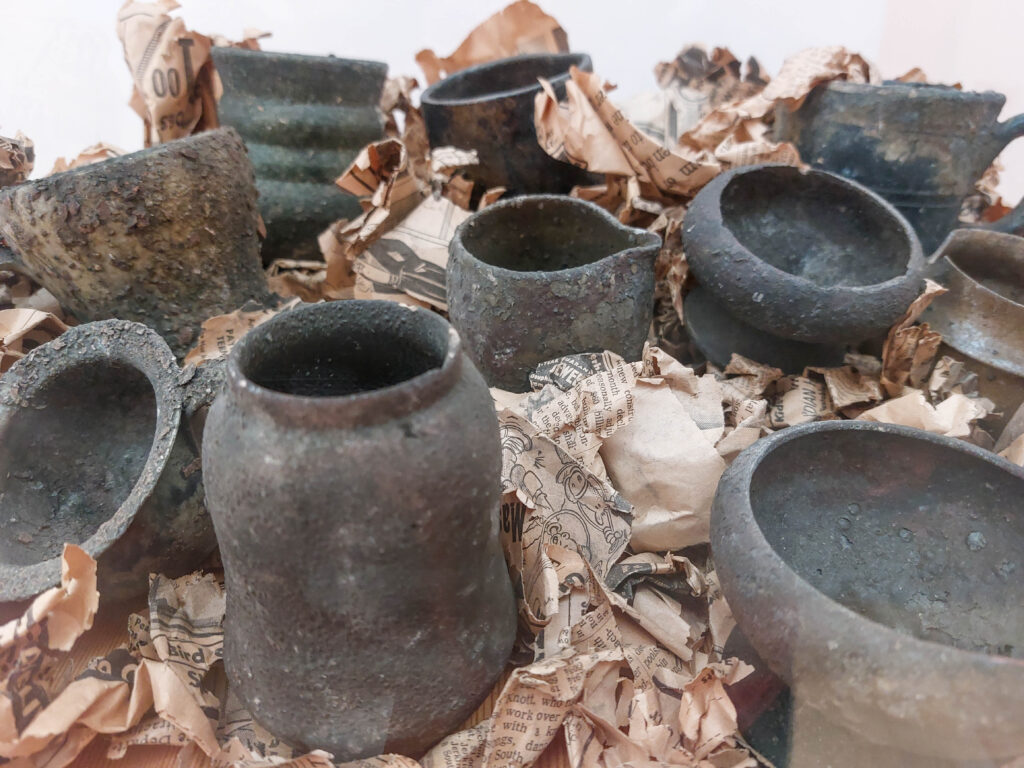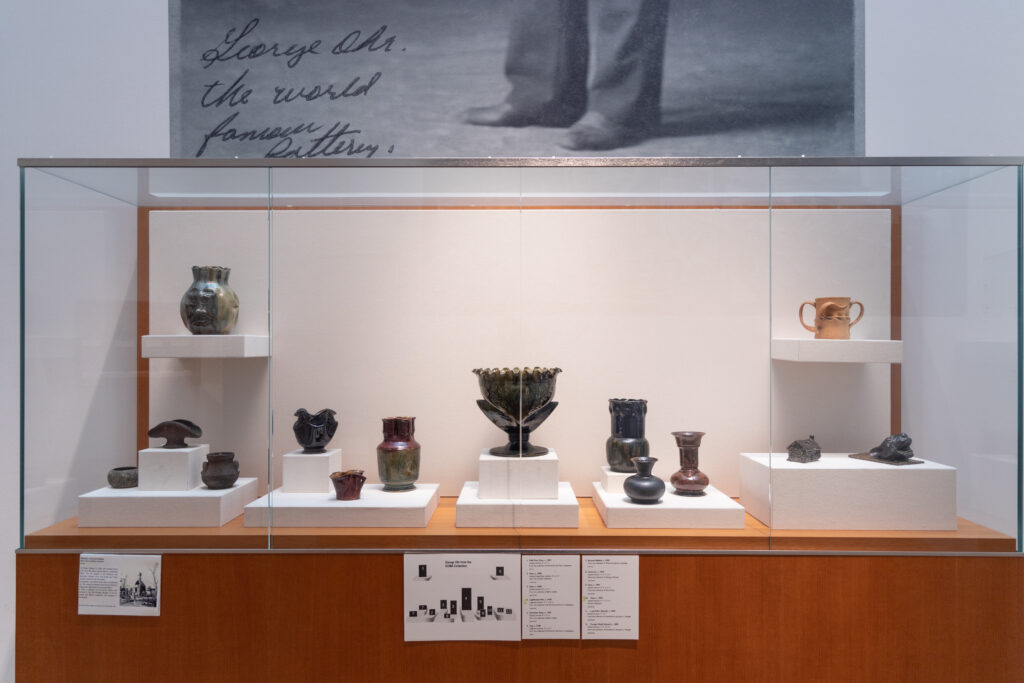Some people called him eccentric. Others claimed he was downright crazy. George Ohr was a talented potter. But with his brash mannerisms and mustache so long he tied it together behind his head, he became known as “The Mad Potter.” Today, along the Gulf Coast in Biloxi, Mississippi, Ohr has an entire art museum named for him, the Ohr-O’Keefe Museum of Art.
We’ll get to the O’Keefe name in a minute. But first, let’s talk about George Ohr.
George Ohr Didn’t Plan to Become a Potter
In the post-Civil War days, George Ohr didn’t know what he wanted to do. His father was a blacksmith and taught George the blacksmith trade. But blacksmithing wasn’t for George.
He worked at 19 different jobs before a boyhood friend offered him an apprentice potter position in New Orleans. George accepted. It didn’t take long before he was hooked.
After learning the art, Ohr traveled to potteries across sixteen states to absorb all he could about pottery creation. He then returned to Biloxi—with its perfect-for-pottery southern Mississippi mud—to set up his own pottery shop.
At first Ohr threw utilitarian pottery items, things like bowls and mugs, and later added fancier vases and such. He sold those pieces to support his wife and ten children.
In 1884 Ohr exhibited over 600 pieces at the World’s Fair in New Orleans. “No two pieces alike,” he claimed.
When the fair ended, he paid a man to take the collection back to Biloxi. The man disappeared, along with Ohr’s entire collection.
Disaster Strikes
Ten years later a fire destroyed Ohr’s studio and all of his art work. George was devastated. He gathered what he could of the charred remains and wouldn’t part with them. He called them his “burned babies.”
After the fire, George got more adventurous. He’d tug at the top of a bowl, pulling it out of symmetry, add paper-thin handles to a vase, and add vibrantly colored glazes to his pieces. Later, he skipped glazing completely, preferring his abstract objects in a bisque state.
Ohr could have sold many pieces, but he was too much in love with his own work. Sure, he hung out his shingle, inviting Biloxi visitors to come into his shop. The visitors loved his work, wanted to purchase pieces to take home. So afraid, though, of losing his darlings, he’d quote an astronomical price that few were willing to pay. In fact, one story says that he would chase after people who did pay his high price and try to buy the piece back.
Eventually, Ohr wanted to sell his entire collection to a single entity—namely, the Smithsonian. After all, he was the best, and he wanted to be known as such. The Smithsonian turned him down.
George Ohr Stops Throwing Pottery
In 1910, George Ohr abruptly stopped working. He packed his collection, stored it, and instructed his heirs to not sell his works until at least fifty years after his death.
He died in 1918 at the age of 60.
True to his father’s wishes, Ohr’s son kept the pottery stored in the back of his business for over fifty years. He eventually sold the entire collection to a New Jersey antiques dealer. The antiques dealer began selling the pieces to art collectors. Soon George Ohr pottery became sought after.
More than fifty years after his death. George Ohr gained the recognition that he had longed for.
Museum Honors George Ohr
Mississippi citizens knew they had a gem with George Ohr and planned a museum to honor him. Thanks to the Jeremiah O’Keefe family’s large contribution to the capital campaign, the museum became reality.
Frank Gehry Designed Museum is an Art Piece Itself
Architect Frank Gehry is known for creating oddly-shaped, quirky structures, including the Frederick R. Weisman Art Museum at the University of Minnesota and the Jay Pritzker Pavilion in Chicago’s Millennium Park.
A Frank Gehry design would be perfect for the Ohr-O’Keefe Museum of Art. But would he accept a smaller-than-usual project? And could he work around the ancient live oak trees that graced the property?
Gehry did accept the project. The result is a museum that includes several separate funky-shaped buildings and pods woven among the trees.
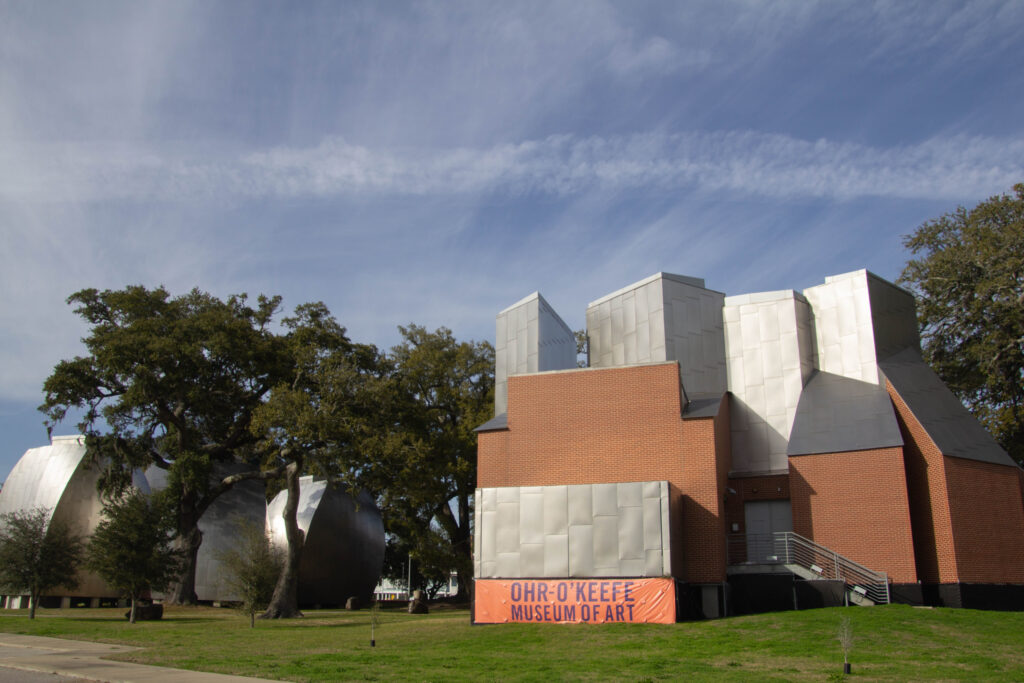
Exploring the Ohr-O’Keefe Museum of Art
After purchasing our tickets in the main museum building, a curator sat down with us. She gave us a map of the museum and explained the best way to explore it. Take the elevator to the second floor and view the exhibits. When you’re finished there, step outside, take in the view of the tree-shaded property and the sunny Gulf waters and beach across the street. Walk down the stairs (if you’re able), and make your way to the other exhibition buildings.
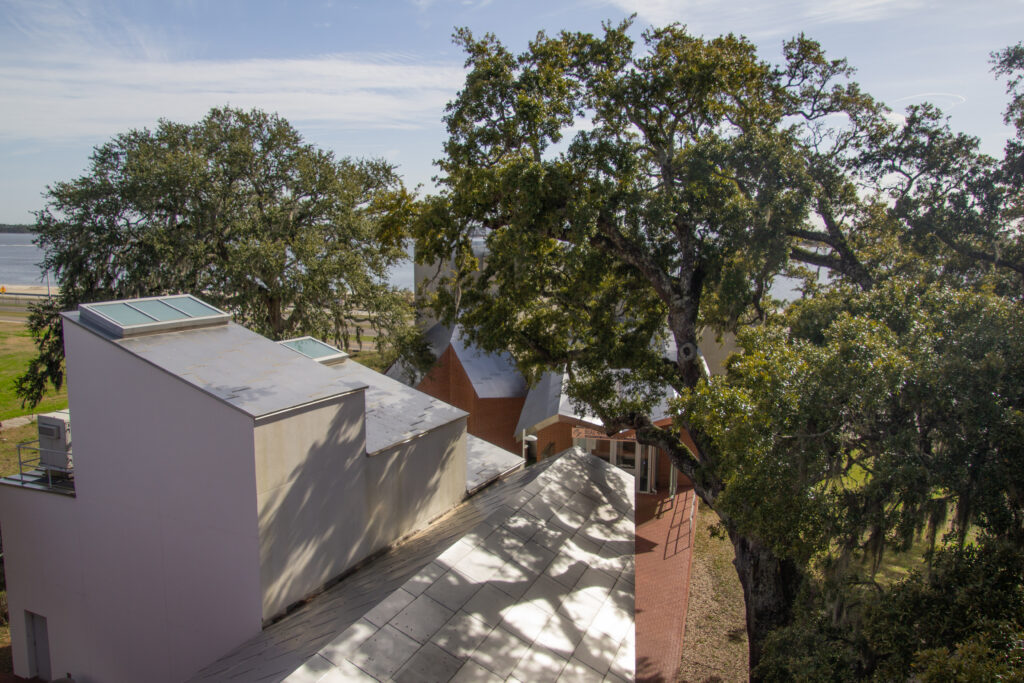
George Ohr’s work is the only permanent collection in the museum, with several other temporary exhibitions. However, one building is set aside exclusively for work created by Black artists.

Moving on to the pods, each display a temporary exhibit of a single artist. These exhibitions rotate regularly. In fact, on the day we visited, two of the pods were in process of turning over to a new artist.
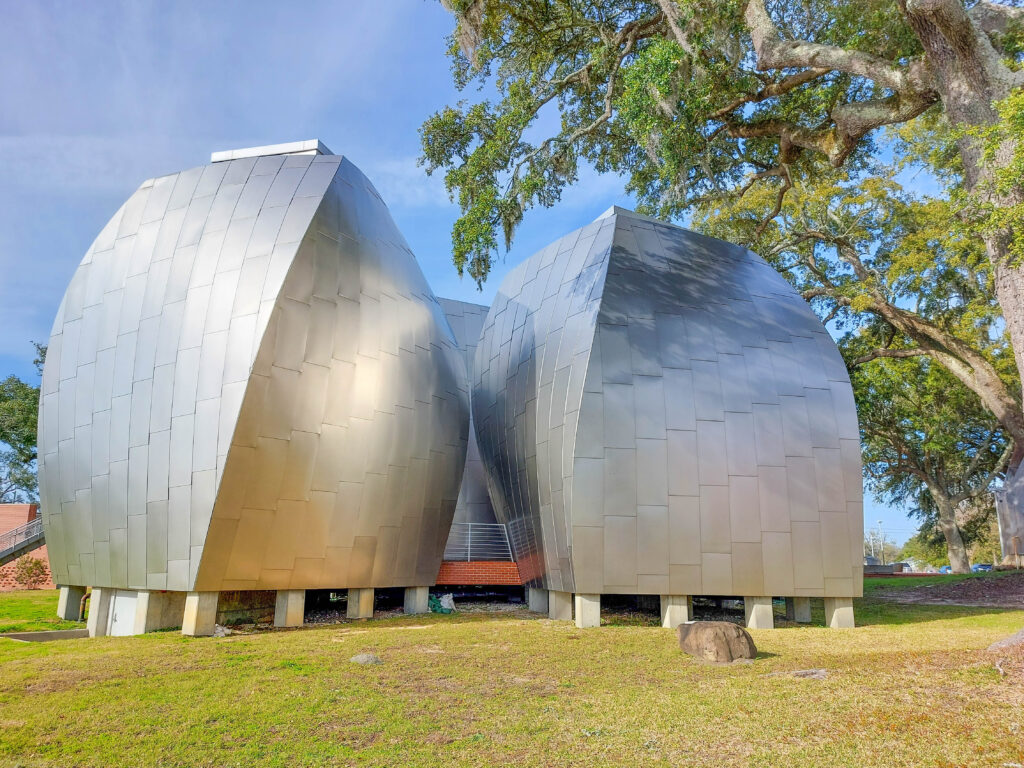
Also on the museum property is the City of Biloxi Center for Ceramics, where you can take a one-time class or sign up for an eight-week course to learn the fundamentals of wheel throwing.
Pleasant Reed Interpretive Center Included in Ticket Fee
Your ticket to the museum includes a visit to the Pleasant Reed Interpretive Center, also on the museum campus. The house was built by Pleasant Reed, a former slave who moved to Biloxi after the Civil War. Reed worked as a carpenter and built the home for his family. Originally the house was in an all-Black area of Biloxi, which was known as the “City within a City.” The house was subsequently moved to the museum campus in 2003.

Unfortunately, in 2005 Hurricane Katrina demolished the original house. The house that stands today is an exact duplicate, constructed from the original specifications.
As you move from room to room in the house, you can watch videos in which Black residents recall various aspects of early Black life in Biloxi.
If You Visit the Ohr-O’Keefe Museum of Art
The Ohr-O’Keefe Museum of Art, located at 386 Beach Boulevard in Biloxi, Mississippi, is open Tuesday through Saturday from 10 a.m. to 5 p.m. Check the website for admission fees and current exhibitions.
********

